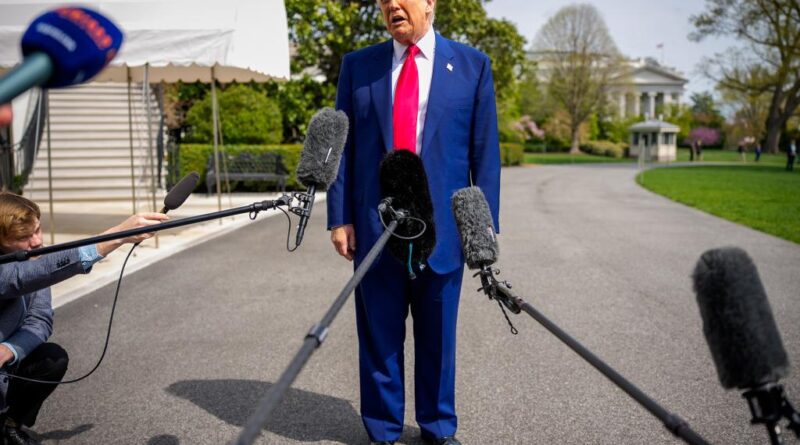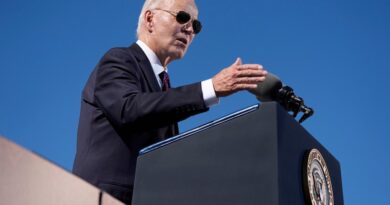The Path to Ending the Ukraine War is Clear — and Trump Has the Leverage

Beyond the heated discussions, there is an increasing agreement among Western diplomats, military experts, defense officials, government leaders, and a significant portion of the media regarding a resolution to the protracted Ukrainian conflict.
The suggested peace initiative entails establishing a demilitarized zone along a revised 1,200-mile border between Ukraine and Russia.
Intense negotiations will determine the extent to which Russian forces will retreat towards their original borders.
Both publicly in the US and discreetly in Europe, it is recognized that a weakened Ukraine will lack the military capability to reclaim Crimea and the Donbas.
These regions were annexed by Russia in 2014 during the Obama administration.
Neither that administration nor any subsequent ones have pushed for military action to recover them.
Openly, the US – and somewhat quietly in Europe – acknowledges that Ukraine will not join NATO, a point Russia will leverage to rationalize its disastrous invasion, a sentiment even many Ukrainians are likely to accept.
How will the West dissuade Russian President Vladimir Putin from his anticipated goals of reclaiming lost Soviet territories and Russian-speaking populations?
For the time being, his military is worn out, its resources are dwindling, and its reputation is in tatters.
In the future, a commercial corridor, bolstered by negotiations with American and international mining firms, is envisioned as a deterrent against Putin’s attacks on non-combatant Americans.
More pragmatically, Ukrainian forces will remain well-armed.
They have already inflicted perhaps a million casualties on Putin’s troops — potentially five times the total losses that Russian forces endured during the decade-long conflict with the Taliban in Afghanistan.
If Trump can even secure a ceasefire, the combative left will continue to decry him as akin to “Munich” and label him “Putin’s puppet.”
However, after an estimated 1.5 million Ukrainian and Russian dead, wounded, sick, and missing, leftist factions across the Atlantic will quietly concede that they never had any realistic plan to win the war, content to fight until the last Ukrainian.
Moreover, they were certainly not prepared — despite their loud claims — to deploy US, UK, European, or NATO ground forces into Eastern Ukraine.
Trump has been met with criticism for his erratic, deal-making style concerning Ukrainian diplomacy over the past ten weeks.
Amidst this critique, it is overlooked that the Biden administration made no effort to bring the conflict to an end.
Instead, following an LBJ-esque philosophy of “light at the end of the tunnel,” it echoed hopes of a grand “spring offensive.”
When this plan disastrously flopped, it resorted to the vague promise of “as long as it takes.”
Western leaders naively believed that pumping more arms, funds, and Ukrainians into the fray would eventually incapacitate Russia — 30 times larger than Ukraine, 10 times wealthier, over four times more populous and notably less troubled by their growing casualties.
Moreover, we have an understanding of the probable path negotiations will take to end the violence.
Once Trump urges Ukrainian President Volodymyr Zelensky for a ceasefire and some mining concessions, Putin will sense an opportunity.
He will dig in and command his generals to ramp up terror strikes to gain leverage.
When Trump realizes that pushing Zelensky incentivizes Putin to abandon any ceasefire negotiations, he will turn his focus on Putin, applying significant pressure: potentially implementing a secondary embargo on anyone purchasing Russian oil, a move even the most intense hawks may not have anticipated.
If Putin appears amenable, Zelensky might feel deceived and seek a better deal regarding mining rights or reconsideration of NATO ramifications or enhanced weaponry — until Trump reminds him that the US remains his only viable channel to a precarious peace.
Thus, it is evident that negotiations will oscillate until a ceasefire is established, resulting in a state reminiscent of a Korean Peninsula-style hot peace.
Putin has consistently preferred to exploit the weaknesses of leaders like Obama and Biden.
He achieved that in 2014 and 2022, avoiding a confrontation with the unpredictable and potentially risky Trump, who kept his activities confined to Russian borders during his presidency.
Putin also understands that, despite claims regarding Trump being his puppet, the latter dealt significant blows to the Wagner group, pulled out of a missile agreement, initially supplied weaponry to Ukraine, imposed sanctions on Russian oil and oligarchs, warned Germany against engaging with Putin on the Nord Stream II pipeline, and effectively dismantled ISIS in Iraq, eliminating leaders such as Abu Bakr al-Baghdadi and Qasem Soleimani.
Putin is aware that nations like India, China, and others purchasing his oil will likely reconsider their stance if he fails to honor his commitment to a ceasefire.
If and when peace is achieved, we can already anticipate the subsequent narrative: Trump will receive no recognition; Zelensky will be hailed as the true hero, and a now-weakened Russia will be portrayed as the victor.
The only enigma remaining?
Since when did the anti-war left prefer a ceaseless and brutal conflict over a challenging, chaotic peace?
Victor Davis Hanson is a distinguished fellow at the Center for American Greatness.



